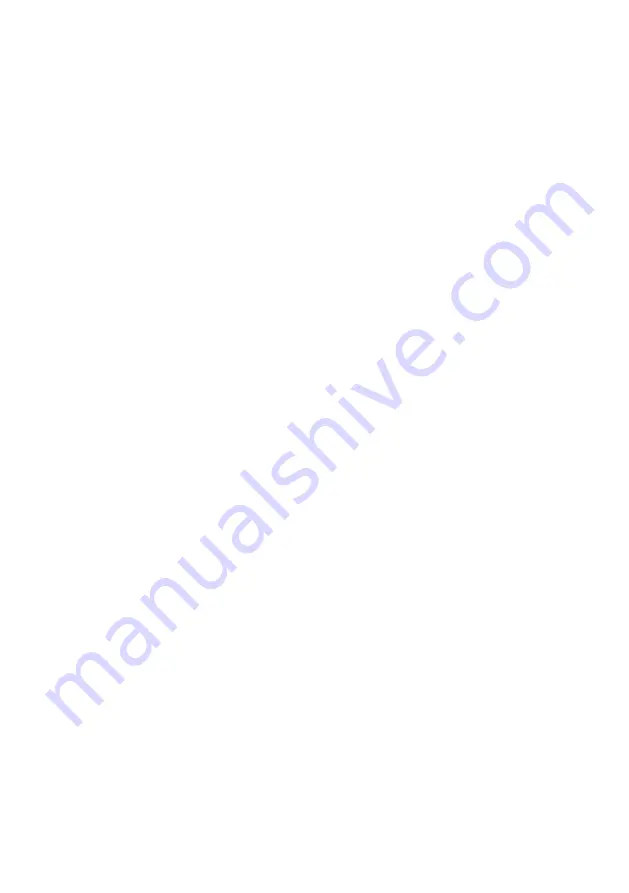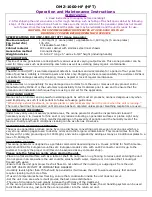
10
- Non superare il livello di riempimento del serbatoio di
raccolta residui.
- ATTENZIONE: se l’apparecchio è provvisto di una presa
supplementare, non superare la potenza riportata sulla
presa. La non osservanza di questa norma può causare
incendi e danni anche mortali all’utilizzatore.
- ATTENZIONE: non aspirare sostanze infiammabili (es.
cenere del camino), esplosive, tossiche o pericolose per
la salute
- ATTENZIONE: usare soltanto le spazzole fornite con
l’apparecchio o quelle specificate nel manuale di
istruzioni. L’uso di altre spazzole può compromettere la
sicurezza
- ATTENZIONE: non lasciare incustodito l’apparecchio
funzionante
- ATTENZIONE: in caso di ribaltamento si raccomanda di
rialzare l’apparecchio prima di spegnerlo
- ATTENZIONE: L’apparecchio non è idoneo ad ambienti
protetti contro le scariche elettrostatiche.
- Non aspirare materiali che possono danneggiare gli
elementi filtranti (es. pezzi di vetro, metallo, tizzoni
ardenti, mozziconi di sigarette, ecc)
- Non immergere l’apparecchio in acqua per la pulizia, né
lavarlo con getti d’acqua
- Togliere sempre la spina dalla presa di corrente prima di
effettuare qualsiasi tipo di intervento sull’apparecchio
o quando questo rimane incustodito o alla portata di
bambini o di persone non coscienti dei propri atti
- Controllare regolarmente il cavo di alimentazione alla
ricerca di danni, quali screpolature o invecchiamento
Sostituire il cavo prima di usarlo ulteriormente
- Se il cavo di alimentazione è danneggiato, esso deve
essere sostituito dal costruttore o dal suo servizio di
assistenza tecnica o comunque da una persona con
qualifica similare, in modo da prevenire ogni rischio
- Utilizzando prolunghe elettriche, assicurarsi che queste
appoggino su superfici asciutte e protette da eventuali
spruzzi d’acqua
- Utilizzare capi antinfortunistici, non avvicinarsi
all’aspiratore nella zona della bocca di aspirazione
con capi slacciati, rotti o altro che potrebbero essere
violentemente risucchiati.
- In caso di operazioni di manutenzione o pulizia, che
supplementary plug, do not exceed the power reported
on the plug. Non-compliance with this norm could cause
fires and damages even lethal to the user.
- ATTENTION: do not suck inflammable substances (ashes
from fire-place), explosive, toxics or dangerous to the
health.
- ATTENTION: use only the brushes supplied with the
apparatus or those specified in the instruction manual.
Using other brushes could jeopardize safety.
- ATTENTION: don’t leave the apparatus unattended
while is in function.
- ATTENTION: in case tipping over, lift the apparatus
before switching off.
- ATTENTION: The appliance is not suitable for use in areas
that are protected against electrostatic discharges.
- Do not aspire materials that could damage the filtering
elements (such as glass, metal, burning embers,
cigarette butts etc.).
- Do not immerge the apparatus into water and neither
use water jets to clean it
- Always remove the plug from the current socket before
undertaking any type of intervention on the apparatus
or if it is left unattended or within children or people’s
reach not quite conscious of their own actions.
- Regularly control the feeding cable looking for damages,
cracks or ageing. Substitute the cable before using it
further.
- If the feeding cable is damaged it must be substituted
by the manufacturer or by its after sales service or in any
case by a similarly qualified person, thus preventing any
possible risk.
- When using extension electric wires ensure that they
are lying on dry surfaces and protected against possible
water jets.
- Use safety garments, do not move near the suction
nozzle of the vacuumer wearing clothing that is loose,
torn or anything that could be violently sucked up.
- In the case of maintenance or cleaning operations,
which must nonetheless always be done by authorised
staff with the vacuumer off and the socket removed
from the plug, always operate in accordance with the
internal safety regulations in the place of work.
- For normal cleaning operations avoid using solvents
Planet
200 T-H / 200 TS-H
2 - PRESCRIZIONI DI SICUREZZA
2 - SAFETY CONDITIONS











































